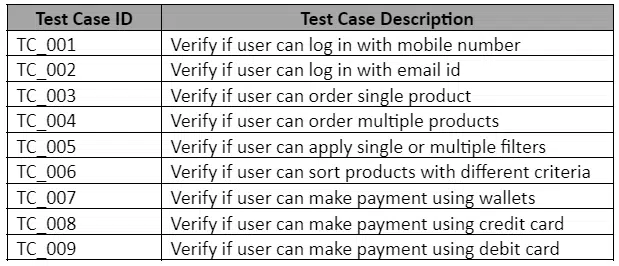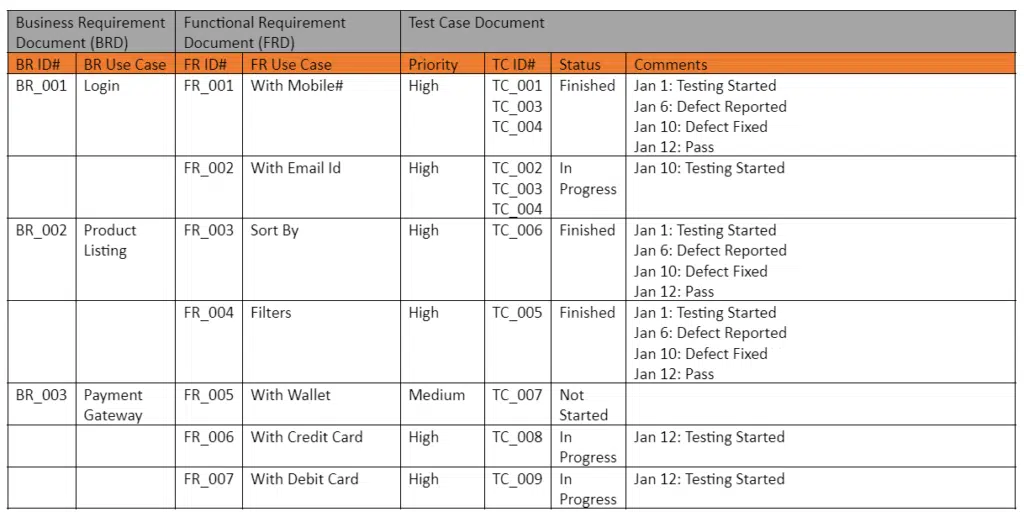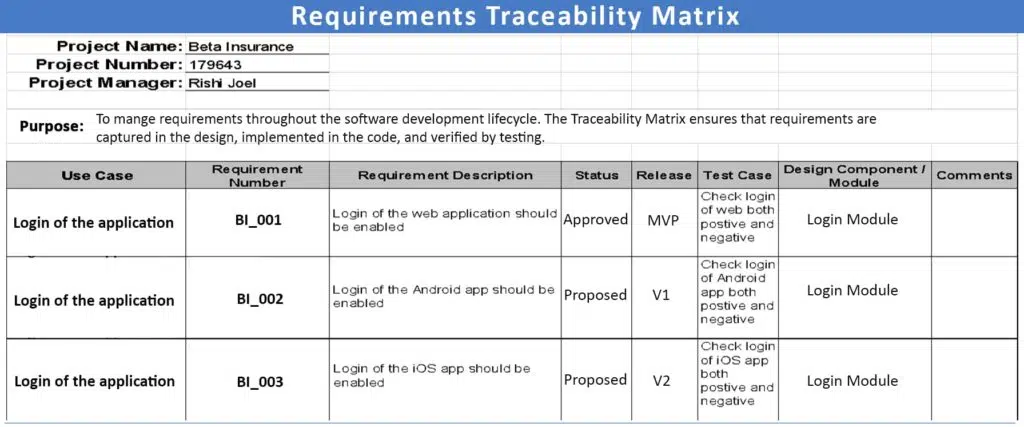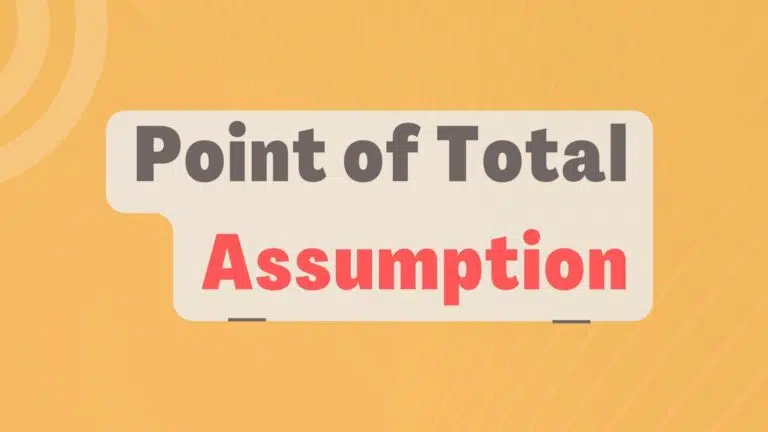Definition: A requirement traceability matrix (RTM) shows the relationship between requirements and artifacts (e.g., test cases, defects, etc.). An RTM guarantees that all requirements are validated through test cases, and no functionality is skipped throughout the testing process. This results in an excellent finished product.
A requirement traceability matrix documents requirements, tests, test results, and issues.
Let me walk you through the Requirements Traceability Matrix, often known as the Traceability Requirement Matrix.
Requirement Traceability Matrix (RTM)
Before discussing the requirement traceability matrix, let’s understand the requirement traceability.
Requirements Traceability connects a set of requirements to other artifacts to ensure all product requirements have been met. Most project management software enables the automatic administration of a traceability matrix and integrates with the tools for defect management; for instance, Jira offers a backlog management system and a system for tracking defects.
Traceability can be performed in both directions; it can be performed by tracing from requirements to test cases as well as by tracing test cases back to requirements.
Importance of Requirement Traceability Matrix
A project manager is responsible for understanding the client’s requirements, ensuring the product is defect-free, and fulfilling stakeholders’ requirements. To deliver the defect-free product, a tester will write test cases (both positive and negative). To do so, the tester will break the requirements into many situations and test cases. The tester will then run every single one of the test cases separately.
Thanks to a requirement traceability matrix, it is now possible to guarantee that every test case is tested and that no requirement is overlooked.
The traceability matrix is in the form of an Excel spreadsheet, and it includes the requirements, test cases, their priorities, and the execution status (pass or failed). This ensures that every criterion is put through its paces. It gives testers the information they need to understand what should be tested. By mapping test cases back to each requirement, test coverage is improved.
The traceability matrix provides an overview of the project status by looking at the percentage of completed test cases. It is also helpful in preventing scope creep and variations in the product and project scope. Any deviation from the scope can be recognized and addressed during the testing phase.
Who Needs Requirement Traceability?
A requirements traceability matrix is useful for any industry that involves software development or hardware production. Particularly in highly regulated businesses to satisfy compliance requirements.
For example, maintaining high-quality standards in the aerospace industry for flight data software is essential. A traceability matrix is required to guarantee that all standards will be satisfied.
A requirements traceability matrix guarantees that no requirements are forgotten for large and complicated projects.
Types of Requirements Traceability Matrix
A requirements traceability can be of three types:
- Forward Traceability: Test cases are mapped according to the requirements. It ensures that all requirements are tested. It checks if requirements are designed, developed, and tested until the product is completed.
- Backward or Reverse Traceability: Requirements are mapped according to the test cases. Sometimes initial design or code changes, in such situations, test cases are frozen, and then the requirements are back mapped to ensure that the scope is unaffected.
- Bi-directional (Forward + Backward) Traceability: It tracks the requirements “forward” by looking at the deliverables and “backward” by examining the requirements. It ensures that all the test cases can be tracked to requirements, and each requirement has a valid test case. This matrix is useful when requirements are constantly changing.
Parameters for Creating a Requirements Traceability Matrix
No guidelines define what parameters are included in the requirements traceability matrix. However, the following parameters help trace requirements properly:
- Requirement ID
- Requirement Type and Description
- Priority
- Test Case with Status
Below is a requirement traceability sample for reference:

Creating a Requirement Traceability Matrix
The following steps are required to create a requirements traceability matrix:
- Define Objectives and Milestones
- Gather Required Documents
- Create a Traceability Matrix
- Validate the Final Result
#1. Define Objectives and Milestones
As the project manager, you are responsible for establishing the project’s objectives. After the objectives have been determined, they will be broken into milestones for monitoring.
Consider an example of a retail application for online shopping. The goal is to make the user’s purchase experience as simple as possible. It requires a login module, product listing module, and payment gateway module.
You can define these modules in the RTM as below:
- BR_001 Login Module: It should allow users to log in.
- BR_002 Product Listing Module: It should allow users to browse different products with advanced filters.
- BR_003 Payment Gateway Module: It should allow users to make payments through wallets, credit cards, debit cards, etc.
#2. Gather Required Documents
Gather all required documents for building an effective traceability matrix. Documents include Business Requirements Document (BRD), Functional Requirements Document (FRD), Technical Requirements Document (TRD), and Test Case Scenarios Documents as prepared by the testing team.
Let’s take functional requirements, which are as follows:
BR_001 Login Module:
- FR_001 With Mobile Number: It should allow users to sign up with a mobile number and OTP.
- FR_002 With Email ID: It should allow users to sign up with an email id.
BR_002 Product Listing Module:
- FR_003 Sort by: It should allow users to sort products by different prices, customer ratings, popularity, discounts, etc.
- FR_004 Filters: Based on the size, color, and brand, users should be able to apply filters.
BR_003 Payment Gateway Module:
- FR_005 By Wallet: It should allow users to make payments with wallets like google pay, Paytm, etc.
- FR_006 By Credit Card: It should allow users to make payments with different credit cards.
- FR_007 By Debit Card: It should allow users to make payments with different debit cards.
#3. Create a Traceability Matrix
The requirements traceability matrix does not adhere to any particular structure and can be modified as per the project requirements. It is possible to construct and maintain it using a spreadsheet written in Excel, a document written in Word, or an automated project management application.
Below are the test cases listed down in excel:

Consolidating everything, here is the requirements traceability matrix:

As shown above, a requirement traceability matrix will:
- Show the required coverage in test cases
- Design and Execution status of each test case
- If there is any User Acceptance Testing (UAT), then UAT status can also be captured on the same matrix.
So, a requirement traceability matrix is a one-stop shop for all requirements till user acceptance.
#4. Validate the Final Result
Once the requirements traceability matrix is created, you must verify that all modules and test scenarios are developed and tested.
Example of Requirements Traceability Matrix
The following image shows an example of a requirement traceability matrix.

Advantages of Requirements Traceability Matrix
- Identify Extra Requirements: A requirements traceability matrix connects requirements to the artifact; it gives an idea about missed requirements and identifies if any requirement being developed is not requested by any stakeholder.
- Streamlines the Testing Process: Traceability helps identify requirements that must be tested. High-priority requirements will be traced to ensure they are tested thoroughly.
- Better Change Management: If there is a change request, traceability will show how the change will take place before it is implemented. Stakeholders can make better decisions by planning to adapt to changes in advance.
- Helps Prioritize Defects: Prioritization is difficult in the case of bulk defects backlog. In such situations, mapping defects to requirements helps address defects efficiently.
- Guaranteeing Project Success: Traceability helps control costs and prevents project delays as unnecessary requirements are avoided. Traceability provides a projection of resources to be deployed and the budget available to complete the project.
- Ease of Compliance and Audits: A proper requirements traceability matrix will help prove compliance faster, and without fear, organizations can get the project plans for the audits.
Conclusion
A requirements traceability matrix, also known as a traceability requirement matrix, is a matrix that divides a project into pieces that can be traced to ensure that each scenario is developed and tested. It ensures that the project will provide a product with the required functionality and fewer flaws or none.
In circumstances where the project contains many flaws, a requirements traceability matrix will assist in prioritizing the flaws that need to be corrected in order of priority. As a result, it is essential to have an accurate requirements traceability matrix to ensure the project’s success.

I am Mohammad Fahad Usmani, B.E. PMP, PMI-RMP. I have been blogging on project management topics since 2011. To date, thousands of professionals have passed the PMP exam using my resources.








I found this post very interesting as a PMP holder since december 2020.
Thanks a lot.
Sincerely
Mail: [email protected]